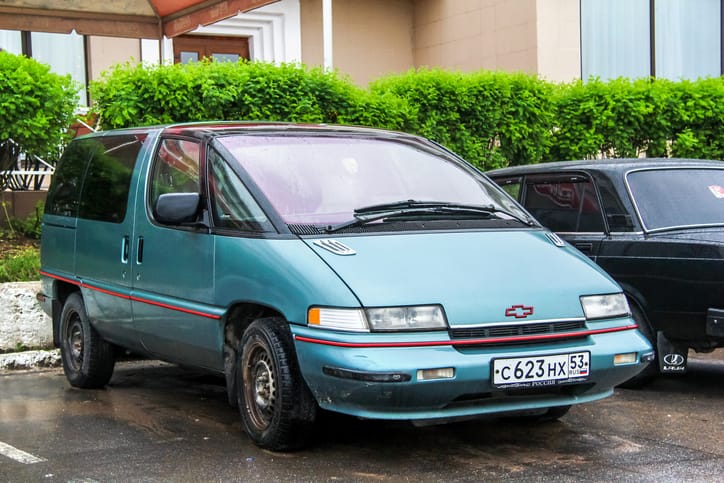The Chevrolet Lumina: A Mid-Size Player in the American Automotive Arena

The Chevrolet Lumina carved its niche in the American car market from 1989 to 2001. Introduced as a response to the highly successful Ford Taurus, the Lumina offered a mid-size sedan option for families and commuters seeking practicality and comfort. This article delves into the history, variations, and legacy of the Chevrolet Lumina.
A Platform for Success: The Lumina's Roots
General Motors (GM) developed the Lumina using their W-body platform. This platform found application in several other GM vehicles, including the Pontiac Grand Prix, Oldsmobile Cutlass Supreme, and Buick Regal. Sharing a platform offered several advantages for GM, including streamlining production processes and fostering design commonalities across their brands.
The Lumina's initial design showcased a boxy silhouette, reflecting the late-1980s automotive trends. It came in two body styles: a four-door sedan and a five-door station wagon, marketed as the Lumina APV (All-Purpose Vehicle). The Lumina offered a range of engine options throughout its production run, catering to diverse driving preferences. These included economical four-cylinder units, powerful V6s, and even a short-lived V8 option.
Evolving Through the Years: Lumina Variations
Over its twelve-year production period, the Chevrolet Lumina witnessed several changes and trim level variations. Here's a glimpse into some of the significant iterations:
- 1989-1994: The initial Lumina offered a choice between 100 horsepower (hp) four-cylinder and 170 hp V6 engines. Anti-lock braking system (ABS) was introduced as an option in 1991.
- 1995-1996: A facelift brought cosmetic upgrades, including a restyled front fascia and the addition of a driver's side airbag as standard equipment. This period also saw the introduction of the more powerful LSi trim level, boasting a 270 hp V6 engine.
- 1997-2001: The Lumina underwent a significant redesign in 1997. The boxy design softened, featuring more rounded lines and a more contemporary look. The base engine became a 180 hp V6, with the LSi retaining its powerful V6 option.
Beyond the Sedan: The Lumina APV
The Chevrolet Lumina APV, introduced in 1990, offered a minivan alternative within the Lumina lineup. Sharing the Lumina platform, the APV provided seating for up to seven passengers with a focus on functionality and practicality. It competed with Chrysler minivans, offering a distinct Chevrolet design language. The APV's production run mirrored the sedan's, ending in 1996.
The Lumina's Legacy: A Chapter in Chevrolet's Mid-Size Story
The Chevrolet Lumina's sales figures were respectable throughout its production run, solidifying its place in the mid-size car segment. However, competition from the ever-evolving Ford Taurus and the rise of Japanese imports like the Honda Accord and Toyota Camry put pressure on the Lumina's market share.
Ultimately, Chevrolet phased out the Lumina in 2001, replacing it with the Chevrolet Malibu as their primary mid-size offering. The Lumina's legacy lies in its contribution to the evolution of the mid-size car segment in America. It provided a comfortable and practical option for families during its time, showcasing the design and engineering prowess of General Motors in the 1990s.
Beyond the Basics: Interesting Trivia about the Lumina
- The Chevrolet Lumina served as a police car for various law enforcement agencies across the United States, particularly in its earlier years.
- The Lumina featured in several popular Hollywood movies and television shows during the 1990s, solidifying its place in American pop culture.
- The Lumina's platform, the GM W-body, also underpinned the Chevrolet Monte Carlo coupe, offering a two-door performance-oriented alternative within the same vehicle class.
Conclusion: A Mid-Size Mainstay
The Chevrolet Lumina played a significant role in the American mid-size car segment during the 1990s. It offered a comfortable and practical option for families, evolving through design changes and engine upgrades to meet the demands of a changing market. While ultimately replaced by the Chevrolet Malibu, the Lumina's legacy lives on as a testament to Chevrolet's ability to produce reliable and functional mid-size vehicles.
